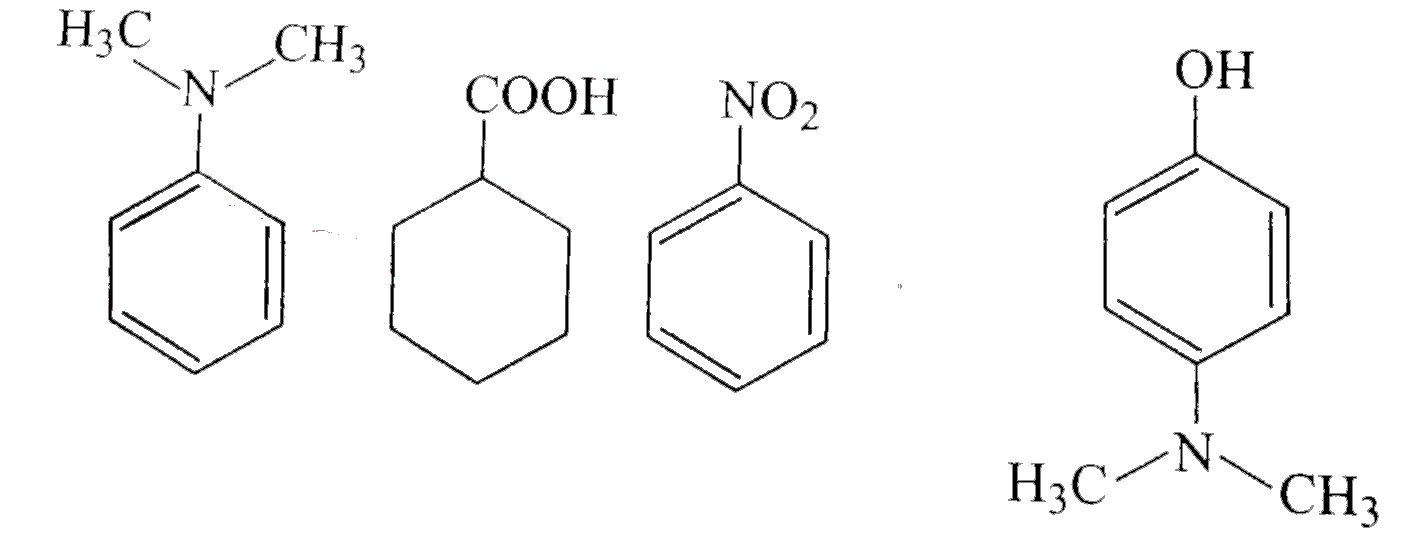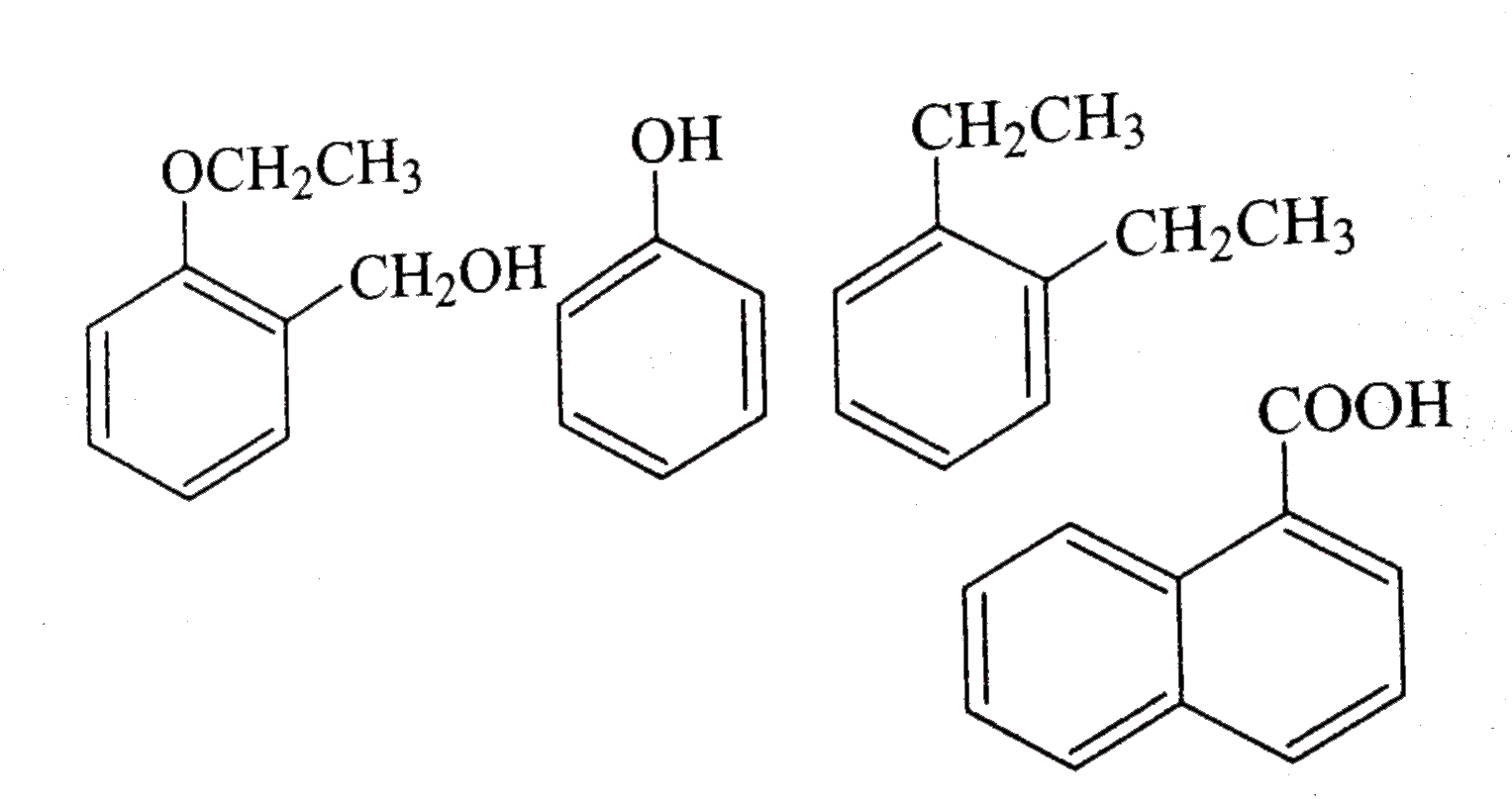Amongst the following, the compound not soluble in excess of NH4OH solution is:
CuSO4
ZnSO4
Fecl3
Agcl
The correct Answer is:4
To determine which compound is not soluble in excess of NH₄OH (ammonium hydroxide), we will analyze the solubility of each compound mentioned in the question.
1. Identify the Compounds:
The compounds we need to analyze are:
- Copper sulfate (CuSO₄)
- Zinc sulfate (ZnSO₄)
- Ferric chloride (FeCl₃)
- Silver chloride (AgCl)
2. Reactions with NH₄OH:
We will examine the reaction of each compound with NH₄OH to see if they form soluble complexes or precipitates.
3. Copper Sulfate (CuSO₄):
- When CuSO₄ reacts with NH₄OH, it forms a precipitate of Cu(OH)₂ (copper(II) hydroxide) and ammonium sulfate ((NH₄)₂SO₄).
- In excess NH₄OH, Cu(OH)₂ dissolves to form a soluble complex: Cu(NH₃)₄²⁺ (tetraamine copper(II)).
- Conclusion: CuSO₄ is soluble in excess NH₄OH.
4. Zinc Sulfate (ZnSO₄):
- When ZnSO₄ reacts with NH₄OH, it forms a precipitate of Zn(OH)₂ (zinc hydroxide) and ammonium sulfate.
- In excess NH₄OH, Zn(OH)₂ dissolves to form a soluble complex: Zn(NH₃)₄²⁺ (tetraamine zinc).
- Conclusion: ZnSO₄ is soluble in excess NH₄OH.
5. Ferric Chloride (FeCl₃):
- When FeCl₃ reacts with NH₄OH, it forms a precipitate of Fe(OH)₃ (ferric hydroxide) and ammonium chloride.
- Fe(OH)₃ does not dissolve in excess NH₄OH.
- Conclusion: FeCl₃ is not soluble in excess NH₄OH.
6. Silver Chloride (AgCl):
- When AgCl reacts with NH₄OH, it forms a soluble complex: Ag(NH₃)₂Cl (diamine silver(I) chloride).
- Conclusion: AgCl is soluble in excess NH₄OH.
Final Answer:
The compound that is not soluble in excess of NH₄OH is Ferric Chloride (FeCl₃).
---
The compounds we need to analyze are:
- Copper sulfate (CuSO₄)
- Zinc sulfate (ZnSO₄)
- Ferric chloride (FeCl₃)
- Silver chloride (AgCl)
We will examine the reaction of each compound with NH₄OH to see if they form soluble complexes or precipitates.
- When CuSO₄ reacts with NH₄OH, it forms a precipitate of Cu(OH)₂ (copper(II) hydroxide) and ammonium sulfate ((NH₄)₂SO₄).
- In excess NH₄OH, Cu(OH)₂ dissolves to form a soluble complex: Cu(NH₃)₄²⁺ (tetraamine copper(II)).
- Conclusion: CuSO₄ is soluble in excess NH₄OH.
- When ZnSO₄ reacts with NH₄OH, it forms a precipitate of Zn(OH)₂ (zinc hydroxide) and ammonium sulfate.
- In excess NH₄OH, Zn(OH)₂ dissolves to form a soluble complex: Zn(NH₃)₄²⁺ (tetraamine zinc).
- Conclusion: ZnSO₄ is soluble in excess NH₄OH.
- When FeCl₃ reacts with NH₄OH, it forms a precipitate of Fe(OH)₃ (ferric hydroxide) and ammonium chloride.
- Fe(OH)₃ does not dissolve in excess NH₄OH.
- Conclusion: FeCl₃ is not soluble in excess NH₄OH.
- When AgCl reacts with NH₄OH, it forms a soluble complex: Ag(NH₃)₂Cl (diamine silver(I) chloride).
- Conclusion: AgCl is soluble in excess NH₄OH.
The compound that is not soluble in excess of NH₄OH is Ferric Chloride (FeCl₃).
Topper's Solved these Questions
Similar Questions
When of the following precipitate is soluble in excess of NH3 solution?
View SolutionWhich of the following precipitate is soluble in excess of NH3 solution?
View SolutionWhich of the following metal hydroxide is not soluble in exces of NH3 solution?
View SolutionAmongst the following, the number of compounds soluble in aqueous NaOH is
?
 ,
, 
View SolutionWhich metal sulphide is soluble in excess NH3 solution?
View SolutionAmongst the following, the total number of compounds soluble in concentrated NH3 solution is:
(A)Ag2CrO4 , (B)Cu(OH)2.CuSO4 , ( C)PbSO3 , (D)Al(OH)3 , (E)Ni(OH)2
(F)Zn3(PO4)2 , (G)BaSO4 , (H)Bi(OH)2NO3 , (I)Mn(OH)2
View SolutionWhich of the following compounds is/are partially soluble or insoluble in NH4OH solution:
(1) Fe(OH)3
(2) Ag2CrO4
(3) Al(OH)3
(4) Ag2CO3
(5) Ni(OH)2
View SolutionName :
a metallic hydroxide soluble in excess of NH4OH.
View SolutionWhich of the following compound will not turn black on adding NH4OH to it ?
View SolutionWhich of the following ppt , is soluble dil , HNO3and NH3 solution ?
View Solution

